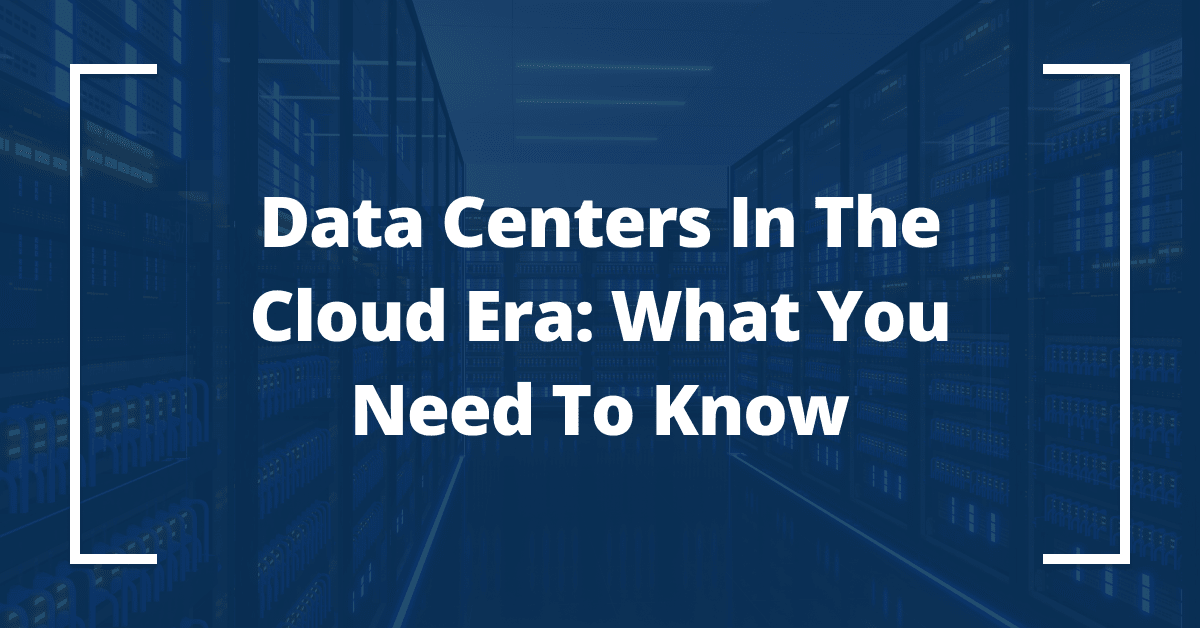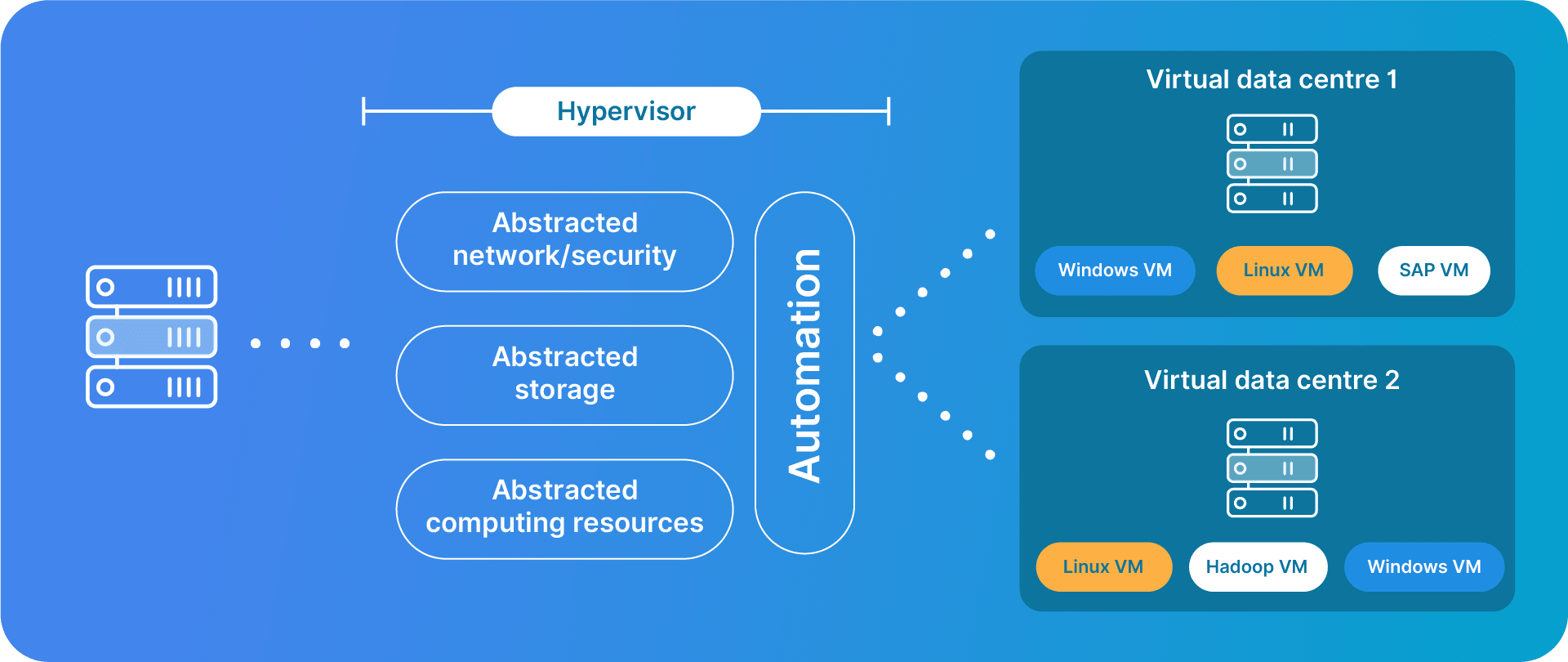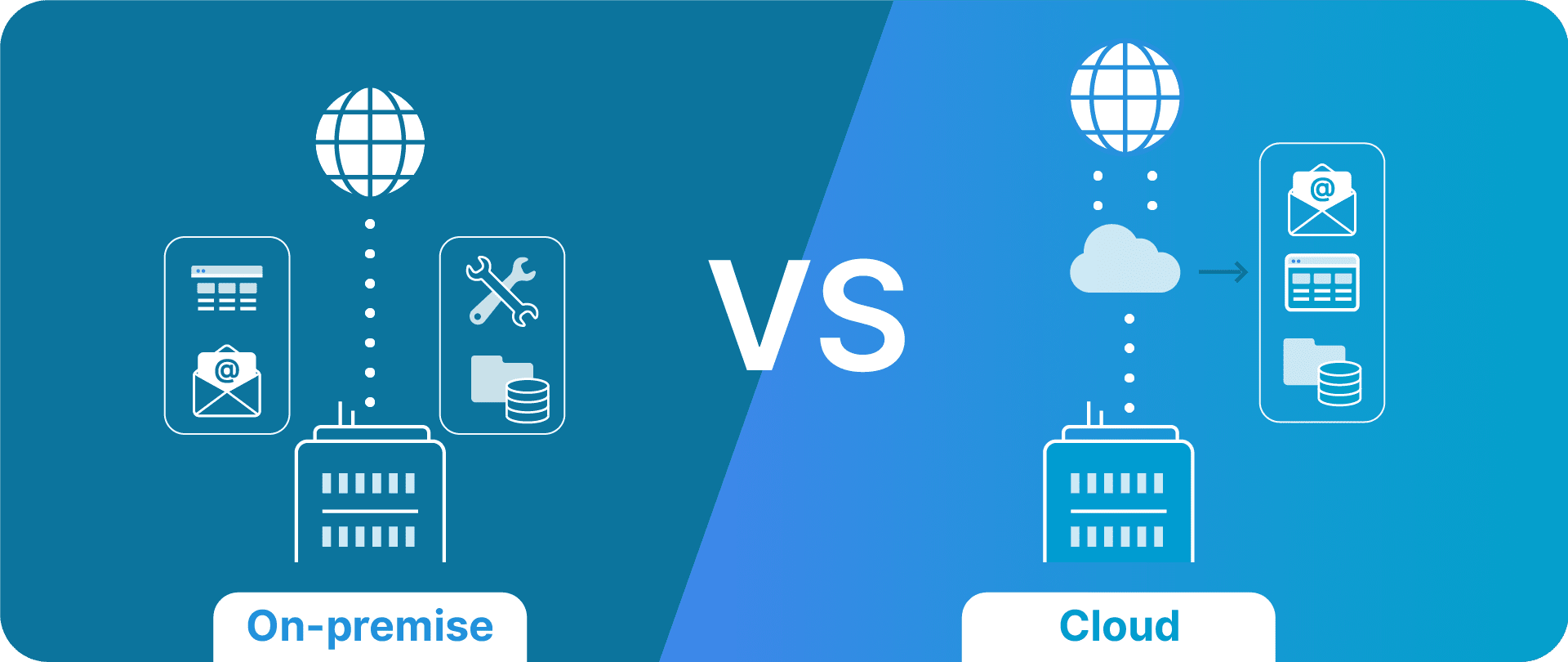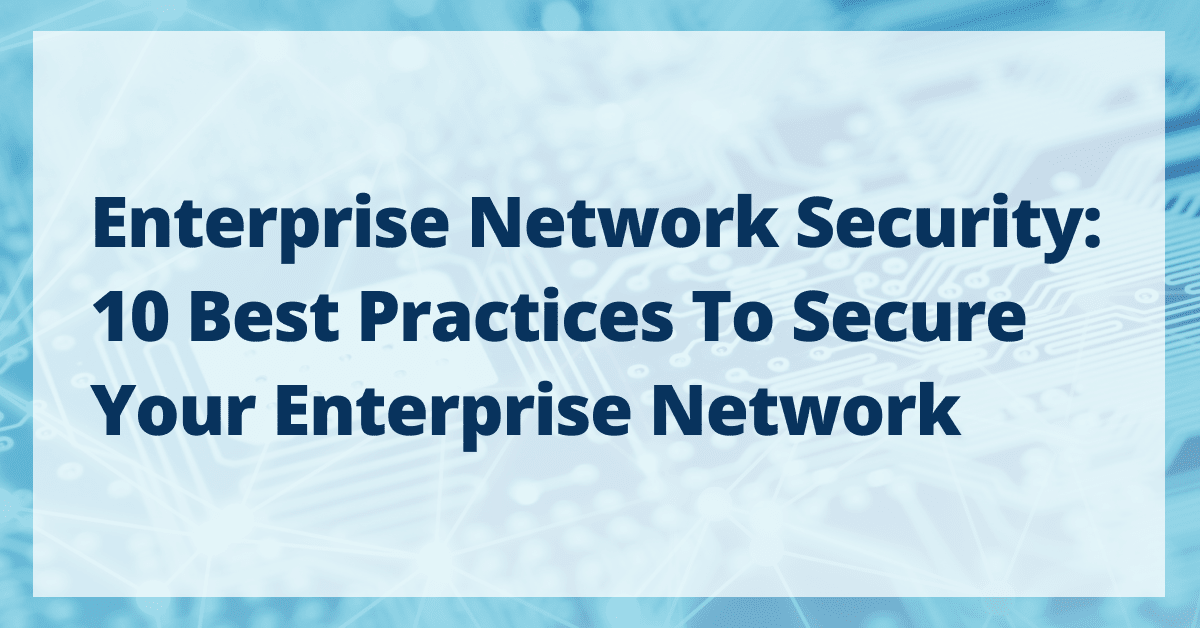
Cloud computing has transformed the very essence of how we store, process, and manage data. As we navigate through the cloud era, the role of data centers is highly critical.
Data centers are more than just a collection of servers; they are the backbone of modern enterprises, offering unmatched scalability, cost-effectiveness, and flexibility.
By demystifying the complexities of cloud data centers, organizations can harness their full potential to control costs, optimize resource utilization, bolster security, and embrace cutting-edge technologies.
This article aims to equip you with a thorough understanding of data centers, setting your business up for enduring success and agility in the cloud-centric world!
Understanding the evolution of data centers
Data centers are the central nervous systems of any digital entity, be it a small startup or a global conglomerate. They are physical facilities that organizations use to house their critical applications and data.

As technology miniaturized through the 1970s and 1980s, the client-server model arose, decentralizing the computing landscape.
Then, during the 1990s, data centers were characterized by their extensive physical infrastructure. They were filled with rows of towering servers, humming storage devices, intricate networking equipment, and the essential cooling and power supplies required to maintain uninterrupted service.
By the late 1990s and early 2000s, server farms packed with high-density servers began to dot the market. This model was primarily focused on maintaining the physical aspects needed to support data storage, processing power, and application hosting.
Businesses invested heavily in the physical space needed to house these data centers, as well as the staffing required for their maintenance and the energy consumed by the servers and cooling systems.
Next came the 2010s, which were defined by the ascent of cloud data centers, software-defined data centers (SDDCs), and edge computing. This brought processing closer to the source of data creation.
As we move through the 2020s, the adoption of cloud computing continues to accelerate. Containerization has become a buzzword, simplifying application deployment and management, while sustainability initiatives are pushing data centers toward greener, more energy-efficient technologies.
Additionally, the advent of virtualization technology allowed for the creation of multiple simulated environments, or virtual machines (VMs), on a single physical server. This dramatically increased the efficiency of resource utilization due to:
- High-speed networking connecting data centers around the world, facilitating rapid data transfer and access.
- Automation introducing a new level of operational efficiency, reducing the need for manual intervention and minimizing human error.
- Software-defined infrastructure bringing flexibility and scalability, allowing businesses to adapt resources as needed with minimal physical constraints.
These technological advancements have paved the way for modern cloud-based and virtual data centers. Cloud-based data centers offer services over the Internet, providing businesses with access to computing power and storage on demand without the user needing direct active management.
Virtual data centers take this a step further by providing a management layer over physical servers, enabling companies to deploy a virtualized network of servers and other resources that can be scaled up or down as business needs dictate.

This evolution marks a shift from capital expenditure on physical hardware to operational expenditure on cloud services. This offered a more cost-effective and scalable approach to data management.
From on-premise to cloud: A comparative analysis
When choosing your business’s data center infrastructure, two main models stand out: on-premise and cloud data centers.

On-premise data center
On-premise refers to a company owning and managing its IT infrastructure. This means the company’s data, servers, and network are all housed within its own facilities.
The on-premise data centers require significant capital expenditures (CapEx) for hardware, software, and the infrastructure necessary to create and maintain a data center. There are also ongoing maintenance and upgrade costs.
When it comes to scalability and flexibility, on-premise data centers can present challenges. Scaling up requires additional capital for new hardware and can be time-consuming.
Cloud data center
Cloud data centers offload IT infrastructure to third-party providers like Liquid Web. This infrastructure is hosted on the cloud and can be public, private, or a hybrid of both.
Cloud data centers shift to an operational expense (OpEx) model, where companies pay for services and storage on an as-needed basis, which can be more cost-effective, especially for businesses that face fluctuating demands. They also allow for rapid scaling, both up and down, as needed, without the need for physical hardware changes.
Cloud data centers have made significant advancements in security measures. Liquid Web’s security standards and server setups, for instance, ensure that data is protected with state-of-the-art security protocols, rivaling, if not surpassing, on-premise setups.
At a glance, here are the main key differences between these two data center models:
| On-premise data center | Cloud data center | |
|---|---|---|
| Definition | Companies own and manage their own IT infrastructure, with data and systems housed within their own facilities. | IT infrastructure is hosted on the cloud and managed by third-party providers, with different models available, such as public cloud, private cloud, and hybrid cloud. |
| Cost | Requires CapEx for hardware and software, with additional costs for maintenance and upgrades. | Operates on an OpEx model with pay-as-you-go pricing, generally more cost-effective, especially with variable demands. |
| Scalability | Physical constraints limit rapid scaling; scaling up requires additional capital for new hardware. | Rapidly scalable without the need for physical hardware changes, accommodating business needs on-demand. |
| Flexibility | May be less flexible due to the requirement for physical infrastructure changes to meet new demands. | Offers greater flexibility for quick adaptations to market demands. |
| Security | Perceived as more secure due to direct control over security protocols, although this can vary based on the company’s resources. | Advanced security protocols that can rival or surpass on-premise setups. |
| Choice factors | Often chosen for full control, compliance needs, or specific legacy requirements. Cost and tech-savviness are also considerations, as well as the existing state of the infrastructure. | Chosen for cost efficiency, scalability, and flexibility needs. Compliance and security needs are also met with modern cloud data center offerings. |
| Future outlook | While stable and controlled, this may not be the best for rapidly changing technology and business needs. | Seen as the future of computing with the increasing trend towards cloud adoption, offering technological advancements and positive return on investment (ROI). |
Why choose one over the other?
Several factors, including the need for control, specific compliance regulations, cost considerations, technical expertise, and current infrastructure, can influence the choice between on-premise and cloud data centers.
Businesses looking to remain competitive in a future-oriented market are turning to cloud data centers. Liquid Web’s cloud offerings are at the forefront of this shift, providing a sophisticated, secure, and scalable solution designed for the future. This advancement is a technological upgrade and a strategic move toward a more agile, efficient, and competitive operation.
Planning for future data management
The ability to anticipate and prepare for the future is imperative. That’s why it’s important to comprehend the up-and-coming trends of data management.
Among these emerging trends, artificial intelligence (AI), the Internet of Things (IoT), and a growing emphasis on sustainability are poised to redefine data centers. These technologies promise enhanced automation, smarter data processing, and reduced environmental impact.
However, they also require organizations to adapt their data management strategies proactively. Liquid Web recognizes the criticality of forward-thinking in this dynamic environment. The company’s dedication to innovative solutions and future-ready hosting services is a testament to its commitment to preparing businesses for evolving data needs and technologies.
Shared responsibility model: Balancing on-premise and cloud components
The shared responsibility model is a framework that delineates the distribution of security and management obligations between a cloud service provider (CSP) and the customer. This model is a cornerstone in the modern approach to data security and management, ensuring that while the CSP secures the infrastructure, the customer maintains the security of their data, applications, and access control.
Prominent CSPs like Liquid Web, Google Cloud, Amazon Web Services (AWS), and Microsoft Azure subscribe to this model, emphasizing its significance. This collaborative approach fosters clarity and accountability, allowing for a more secure cloud environment.
However, it also presents challenges, such as the need for a precise understanding of the differentiation of responsibilities and the coordination required to manage them effectively. As such, businesses must recognize and engage with both the advantages and the potential complexities that come with this approach to data management and security.
Engaging a trusted partner for secure data management
When it comes to data management and security, your partnerships can be the difference between success and vulnerability. A trusted partner brings expertise and assurance that your data is managed and secured by capable hands. This encompasses a broad spectrum of services and knowledge, including risk assessment, compliance adherence, and security protocol implementation.

Liquid Web is a trusted provider that owns and operates its core data centers. This ownership translates to comprehensive control over the infrastructure, enabling them to ensure the highest levels of service and security. Here’s why:
- Redundancy:Liquid Web maintains redundancy in the networks, power, and cooling systems, safeguarding against failures and ensuring uptime.
- Compliance: Adherence to industry standards is not optional but fundamental, and Liquid Web’s compliance is rigorous. No matter your industry, Liquid Web provides comprehensive solutions that comply with the Health Insurance Portability and Accountability Act (HIPAA) and the Payment Card Insurance (PCI) security standards.
- Global presence: With data centers spread globally, Liquid Web offers robust power and connectivity infrastructure that underpins their service delivery.
- Environmental control: Liquid Web’s data centers are engineered for precise environmental control, securing hardware against physical threats.
- Security:Liquid Web’s security measures encompass robust physical and cyber aspects. The company maintains direct connectivity with top-tier internet service providers to ensure speed and reliability.
- Support: Round-the-clock support is crucial, and Liquid Web provides 24/7/365 customer service to address any issues immediately.
- Performance guarantees: The company stands by its services with high-performance guarantees and service-level agreements (SLAs), ensuring that clients’ operations run smoothly.
Liquid Web’s suite of services meets various needs, whether it’s scalability, secure hosting for compliance, or cost-efficient cloud hosting.
Choosing Liquid Web means partnering with a provider that understands the intricacies of data management and possesses the infrastructure and expertise to deliver secure, reliable, and compliant hosting services.
Take the next step with Liquid Web
As you’ve explored in this article, data centers have undergone significant transformations. From the bulky mainframe rooms of the mid-20th century to the on-premise servers of the early digital age and today’s dynamic cloud data center environments, the journey has been marked by relentless innovation and adaptation.
You’ve also seen how cloud data centers, with their scalability, cost-efficiency, and flexibility, are empowering businesses to navigate changing market conditions with greater agility. That’s where Liquid Web comes in.
By choosing Liquid Web, businesses are promised 99.999% uptime, signifying an unwavering commitment to reliability. The company’s secure and certified solutions provide peace of mind, while customizable server clusters cater to specific performance and storage needs.
The agility and affordability of Liquid Web’s VPS and cloud hosting solutions make scalability accessible, and the complimentary migration service offers a seamless transition to state-of-the-art infrastructures.
Ready to future-proof your data management and embrace the full potential of cloud data centers? Contact Liquid Web today and propel your business forward into the cloud era!
[ad_2]
Source link






